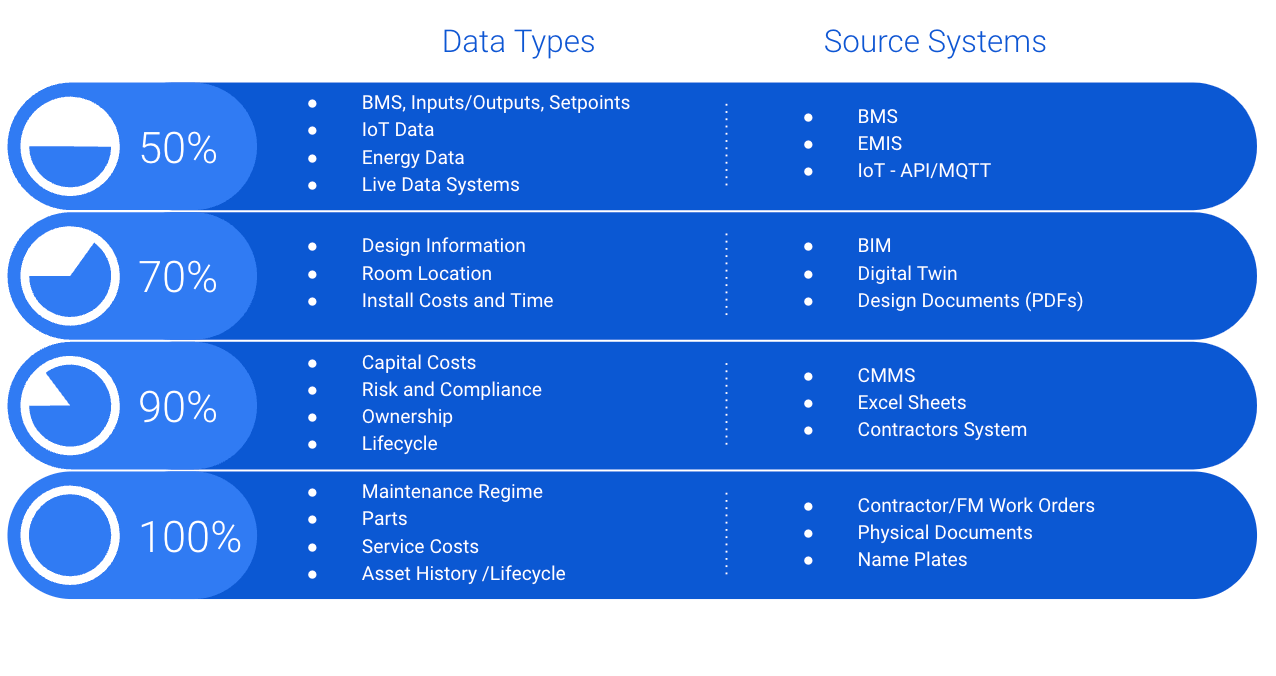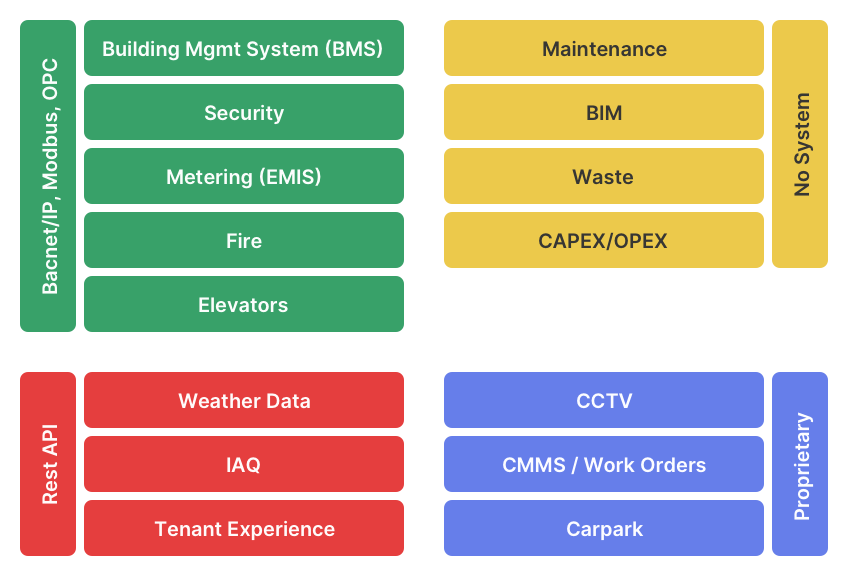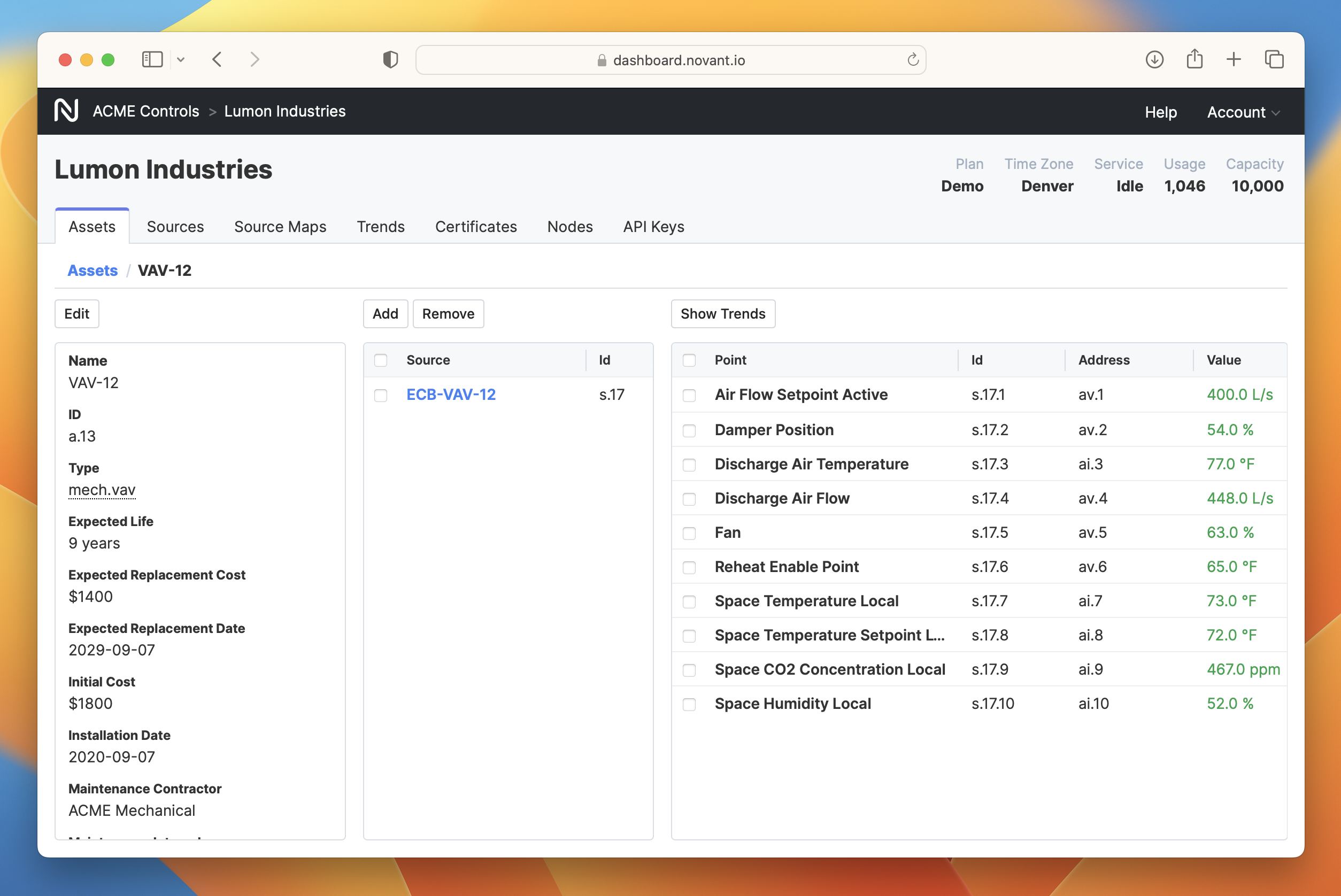This is Part 1 in our three-part series on "What is wrong with an Independent Data Layer?"
We've now discussed the frequently asked questions and the benefits of an Independent Data Layer in a previous post, What is wrong with an Independent Data Layer?.
Now we know why we need an IDL, the next step is how do we implement an IDL?
Building systems are often disjointed and lack the ability to communicate with each other or through a central system. To achieve a true IDL and enable smart building solutions, four sections are required. As depicted in the figure below, these sections exist in various systems, each with different communication methods and data types.

Mapping it out
Before starting any work, it is essential to map out your systems to understand the landscape better. By doing so, you can determine the best method for systems to communicate with each other, identify common themes, and determine the easiest ways to integrate between systems, such as using BACnet/IP.
Mapping out your current architecture makes it clear what you can do today. And although achieving an IDL may seem challenging, it can be done step-by-step through every project, big and small. Your goal should be to define a "Digital Blueprint," and any work that occurs in your building, such as maintenance or large projects, should align with it.

Digital Blueprint
Now it's time to create your Digital Blueprint. This can be broken into four simple steps: Data collection, Asset information, Link it together, and Track changes. Remember, the goal is not to define products or companies but capabilities.
- Data collection
- Asset information
- Link it together
- Track changes.
Step 1: Data Collection
The first step is to establish a data connection and data structure that enables you to collect and store data from your building's various systems. This step involves addressing the lack of standardization in building systems and the fragmentation of data. Break the systems down into segments, as shown above, map out how they currently work, and determine what communication methods they have available. Focus on protocols that are common within the industry or data transfer methods such as BACnet/IP, OPC, etc.
Step 2: Asset Information
To determine what asset data you need for your use cases, ask yourself questions such as, "Do I need a full BIM for operational budgeting?" or "Do I need data from my security system to enable FDD?" Not all information has the same value, but knowing what you want to achieve in terms of use cases ensures that you are collecting the right information from day one. Standards can help guide the conversation here, and a solid IDL can inform, educate, and guide throughout the process.
Step 3: Link it together
Bringing your systems together is critical for long-term accuracy and accountability. The flaw with many solutions today is that if this information is collected, it is done in a very selfish manner and lacks a way of validating the information with physical activity. This is quite a complicated topic in itself, but Novant helps simplify this step, which we'll discuss in our next post.
Step 4: Track changes
Once you've completed the Digital Blueprint checklist, you can develop a unified data strategy that enables data to be collected and stored in a centralized location. This requires a tool that autonomously tracks changes, but also contractual obligations to ensure work is being carried out in a way that keeps your information accurate.

🚀
Novant is designed from the ground up to ensure you can solve these four problems with a single solution. While an IDL unlocks many use cases, it should hyper-focus on being the connecting glue between these systems, not the platform but the tool to enable many systems, data types, and worlds to combine into a rich data source.
Stay tuned for Novant's upcoming blog series on "What is wrong with an Independent Data Layer?"
- Part 1: Building an Effective Data Layer for Your Building
- Part 2: Linking Data Sources for Accuracy
- Part 3: Availability, Access, and Use Cases